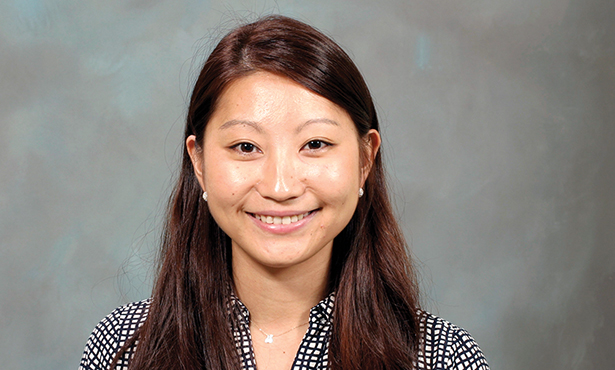Tell us about your background.

I am originally from Japan and moved to the United States when I was 12 years old. I received my undergraduate degree from Virginia Tech and my veterinary degree from NC State in 2015. After veterinary school, I did a small animal rotating internship at The Ohio State University and joined the University of Illinois for a cardiology residency. I stayed on as faculty after my residency because there was no other place I would rather be to start my career as a cardiologist.
How did you become interested in cardiology?
Right before starting my first year of veterinary school, I was diagnosed with an arrhythmia and had a full cardiac work-up. It was when I was getting an echocardiogram and seeing my heart beating on the screen for the first time that got me interested in cardiology. NC State has an amazing group of cardiologists who captured my heart and made me want to pursue my career in cardiology.
What are your special interests?
Having Dr. Ryan Fries as my mentor since I was a resident, I am interested in advanced imaging, such as cardiac MRI and 3D echocardiography and interventional procedures. I am also interested in exploring different ways to manage congestive heart failure and wish to establish the University of Illinois as an institution offering mitral valve repair surgery and revolutionize the way we manage chronic valvular disease.
Tell us a fun fact about yourself.
This is very silly but when I was in high school, I volunteered as a ball girl for Legg Mason, now called Citi Open, which is one of the US Open Series held in Washington DC. I got chosen to be the ball girl for Andre Agassi the year he retired and got a chance to have a little chat which was one of the most exciting experiences of my life.
Tell us about your favorite case.
My favorite case is one of the first cases I saw as a resident. It was a puppy that was referred for evaluation of a PDA. The dog was in fulminant heart failure and his PDA was starting to reverse as a result of severe pulmonary hypertension. I hospitalized the dog and treated aggressively for heart failure and pulmonary hypertension in hopes to reverse the right to left shunting. Luckily, we were able to stop the reversal and take him to surgery to fix the PDA the following day. The dog was able to be discharged the next day without any medications and is still doing great!




